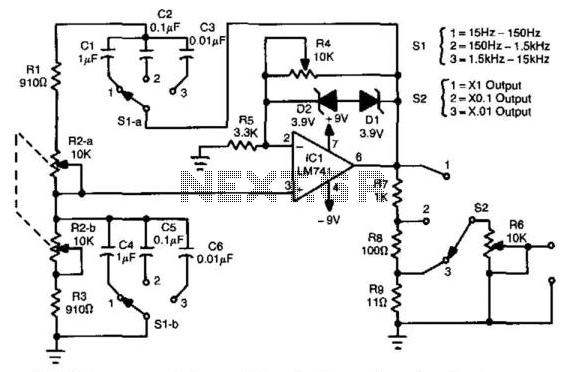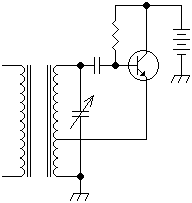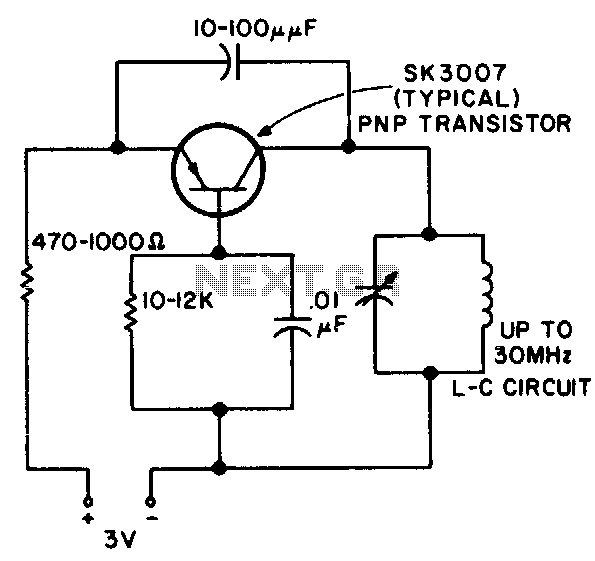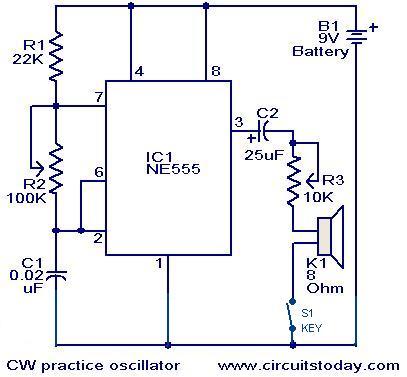
Three-Decade 15Hz To 15Khz Wien-Bridge Oscillator

In this circuit, an LM741 operational amplifier drives a Wien-bridge network utilizing two zener diodes as an amplitude limiter. Range selection is performed by a switch that selects between capacitors (C1 through C6), while tuning is achieved using a ganged potentiometer. The output voltage can reach approximately 8 Vpp at maximum, contingent upon the settings of switch S2 and resistor R6. Resistor R4 is configured to allow for maximum distortion while maintaining a stable output.
The circuit employs an LM741 operational amplifier, which is a versatile component widely used in analog signal processing. The Wien-bridge oscillator configuration is known for its ability to generate sine waves, making it ideal for applications requiring stable frequency generation. The use of two zener diodes introduces a form of amplitude limiting, ensuring that the output does not exceed a predefined voltage level, which is crucial for protecting downstream components from over-voltage conditions.
Capacitors C1 through C6 are strategically selected to provide different frequency ranges, allowing the user to adjust the oscillator's output frequency according to the application requirements. The ganged potentiometer facilitates fine-tuning of the circuit, enabling precise adjustments to the oscillation frequency and amplitude.
The output stage of the circuit is designed to deliver a maximum peak-to-peak voltage of approximately 8 V, which is adjustable based on the settings of switch S2 and resistor R6. This flexibility is essential for applications that demand different output levels for various scenarios. Resistor R4 plays a critical role in controlling the distortion characteristics of the output signal. By setting R4 to a value that allows for maximum distortion, the circuit can achieve a balance between signal integrity and the desired output characteristics, ensuring stable operation across various conditions.
Overall, this circuit exemplifies a robust design for generating sine wave signals with adjustable frequency and amplitude, suitable for a range of electronic applications where precision and reliability are paramount. In this circuit, an LM741 op amp drives a Wien-bridge network using two zener diodes as an amplitude limiter. Range selection is done by switch selecting the capacitors (CI through C6) and tuning is done via a ganged pot. The output is about 8 Vpp max., depending on the setting of S2 and R6. R4 is set for maximum distortion consistent with stable output. 🔗 External reference
The circuit employs an LM741 operational amplifier, which is a versatile component widely used in analog signal processing. The Wien-bridge oscillator configuration is known for its ability to generate sine waves, making it ideal for applications requiring stable frequency generation. The use of two zener diodes introduces a form of amplitude limiting, ensuring that the output does not exceed a predefined voltage level, which is crucial for protecting downstream components from over-voltage conditions.
Capacitors C1 through C6 are strategically selected to provide different frequency ranges, allowing the user to adjust the oscillator's output frequency according to the application requirements. The ganged potentiometer facilitates fine-tuning of the circuit, enabling precise adjustments to the oscillation frequency and amplitude.
The output stage of the circuit is designed to deliver a maximum peak-to-peak voltage of approximately 8 V, which is adjustable based on the settings of switch S2 and resistor R6. This flexibility is essential for applications that demand different output levels for various scenarios. Resistor R4 plays a critical role in controlling the distortion characteristics of the output signal. By setting R4 to a value that allows for maximum distortion, the circuit can achieve a balance between signal integrity and the desired output characteristics, ensuring stable operation across various conditions.
Overall, this circuit exemplifies a robust design for generating sine wave signals with adjustable frequency and amplitude, suitable for a range of electronic applications where precision and reliability are paramount. In this circuit, an LM741 op amp drives a Wien-bridge network using two zener diodes as an amplitude limiter. Range selection is done by switch selecting the capacitors (CI through C6) and tuning is done via a ganged pot. The output is about 8 Vpp max., depending on the setting of S2 and R6. R4 is set for maximum distortion consistent with stable output. 🔗 External reference





